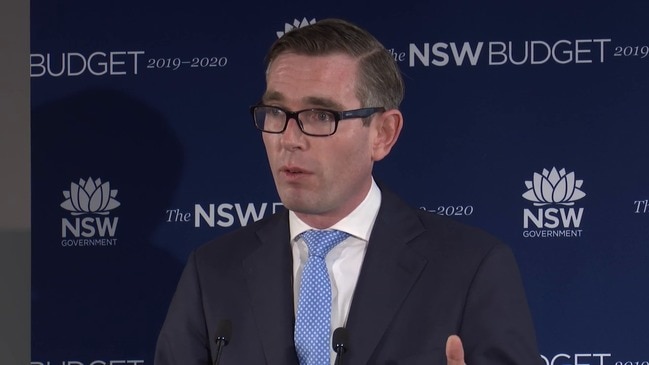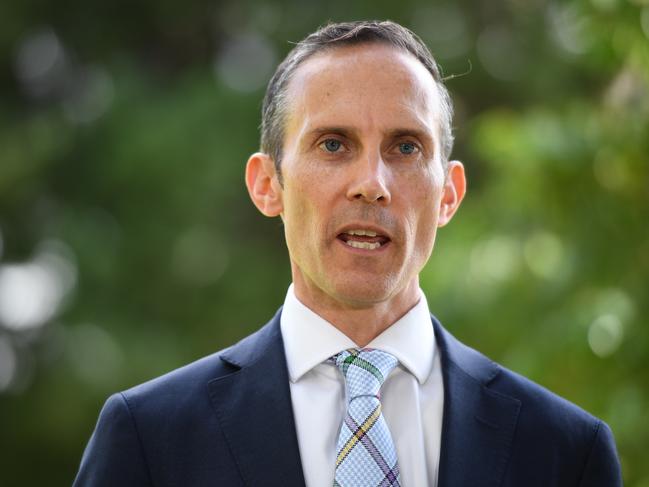Tax cuts will hit women and business the hardest
While Labor frontbenchers including Andrew Leigh have announced support for the first stages of the government’s proposed tax cuts, they continue to hold out on supporting their final tranche, writes Satya Marar.

Opinion
Don't miss out on the headlines from Opinion. Followed categories will be added to My News.
While Labor frontbenchers including Andrew Leigh have announced support for the first stages of the government’s proposed tax cuts, they continue to hold out on supporting their final tranche — to lower the 32.5 per cent marginal rate to 30 per cent while abolishing the 37 per cent bracket for those earning between $125,000 and $200,000 by 2024-25.
In addition to demanding additional costings on the package, the Opposition wants to know how much of the cuts will benefit income earners making above $180,000, and argue that the final stage may be undesirable as it will “boost inequality” and that “most of the money will go to men instead of women”.

There are some gaping holes in this line of thinking. Firstly, the Budget papers have already costed the tax cuts at $158 billion over 11 years, yet the Opposition’s research fails to account for people’s behavioural responses to Canberra siphoning off less of their money.
Dynamic modelling by former Treasury and current Centre for independent Studies economist Dr John Humphreys instead shows that the actual cost will be $122 billion over 11 years, with most of the reduction specifically due to the final tranche of the government’s tax cuts package.
This is because of greater incentives created by abolishing the tax brackets and raising thresholds at that level to earn more, seek promotions, save, take entrepreneurial risks, invest in productive assets, and even report more taxable income to the government.
Not only will this productivity lift help offset revenue losses, it will do so while ensuring that higher income earners still bear the lion’s share of tax burden since the system will remain progressive.
In return, Dr Humphreys’ research shows that the final-stage tax cut alone will boost GDP by $10 billion per year, with a total wellbeing increase of $3 billion a year to the consumer surplus.
This can only be good news for the country’s small businesses amid a retail slump and burdensome red tape such as trading hours restrictions which are holding them back.
These tax cuts are not about simply putting money into people’s pockets to be spent in a temporary churn. They’re about bold, longer term micro-economic reform, something which we have not had in over 20 years.

As for the implication that the tax cut is sexist since men are over-represented as higher income earners, it’s rather doubtful that Leigh would employ the same rhetoric if a tax cut were announced for teachers or nurses — even though this would technically benefit more women than men.
But the real kicker is this: the empirical research, including articles cited on Leigh’s own website, concurs that women (especially if the married) are more responsive to tax incentives than men. This is because ‘secondary earners’, who are typically female, face a wider range of choices than ‘primary earners’. For many mums, this means that the choice to re-enter the workforce, move to full-time work, or work more hours, becomes more appealing.
This wouldn’t just be a win for women’s workforce participation. It would also ensure that we make the most of our human resources, especially since the women who would benefit from the final-stage tax cut are typically highly educated.
There’s even research from the London Business School to suggest that productivity levels go up when men and women work in tandem, partly since gender parity undermines the phenomenon of groupthink, i.e. the likelihood of like-minded groups defending ideas which could be ill-conceived.
Why would Labor be against that?
Passing much-needed, productivity-boosting tax reform that the government won a mandate for at the election is just the kind of bipartisanship that Australia desperately needs.
Satya Marar is the director of policy at the Australian Taxpayers’ Alliance.


